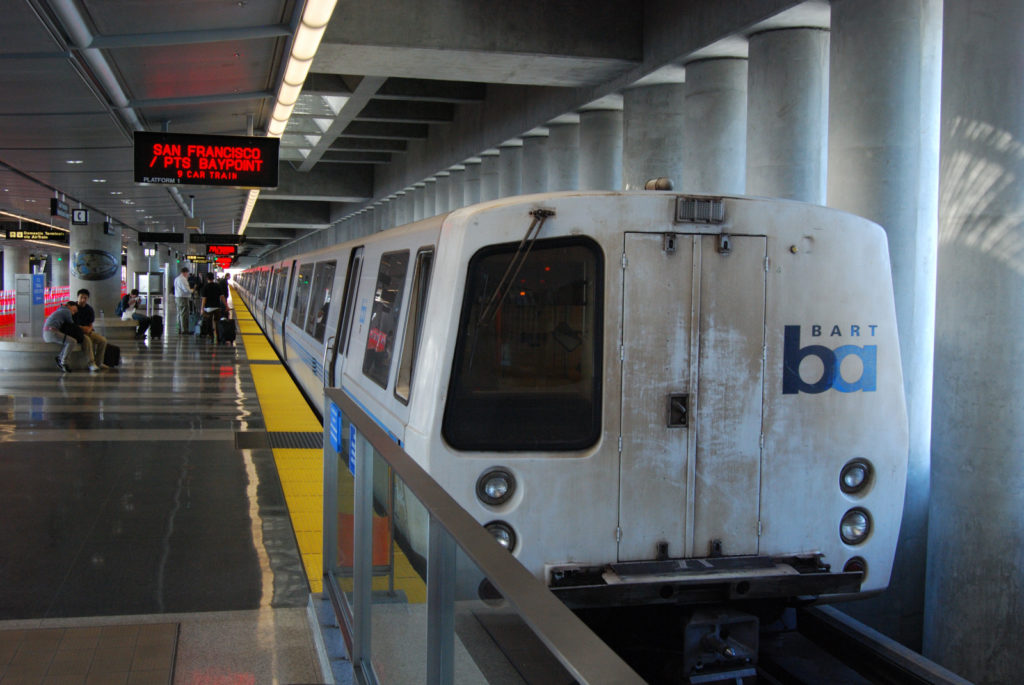
The doors open and chaos ensues as BART riders push their way through the dense crowds. The sardine-like claustrophobia sets in as people pack their way into metal carts that submerge into tunnels. As transportation continues to be at the apex of city life, what will the future look like for the bay?
The San Francisco Bay Area is projected to increase from 7 million to over 9 million residents by 2040. Out of the city’s current 7 million residents, nearly half a million are weekday Bay Area Rapid Transit (BART) passengers.
As the rates of ridership are projected to increase, concerns over affordability, expansion and safety continue to be addressed by BART leadership and the California State Legislature.
On Jan. 1, 2020, rates of inflation will increase BART fares by 5.4 %. To address concerns about affordability, the Metropolitan Transportation Commission (MTC) adopted Resolution No. 4320, called the Means-Based Fare Discount Program. This pilot resolution will go into effect early 2020, creating a 20% fare discount for those whose annual earnings are twice the federal poverty level or lower.
According to MTC, transportation is the third most expensive utility for those in the Bay Area behind housing and food, a considerable expense as the housing crisis persists.
The U.S. Department of Health and Human Services states an individual making under $12,140 qualifies to be at the federal poverty line. However, in California the U.S. Department of Housing and Urban Development defines “low-income limits” in San Francisco as $82,200 for an individual in 2018.
On Oct. 21, the Berkeley Forum hosted a discussion with Rebecca Saltzman, BART vice president and District 3 representative, on the future plans for BART. The Berkeley Forum is a student-run organization from the University of California, Berkeley that hosts debates and panel discussions with experts across various fields.
Saltzman opened up the conversation with a financial breakdown encompassing current BART repairs and plans for future developments.
Measure RR, passed back in June 2018 for capital improvements, created a $3.5 billion bond where about 90% is budged to go towards repairs, and 10% towards the expansion of BART into Silicon Valley. The Bay Area bridge toll will also increase by $3 per vehicle over the next few years as part of the measure.
Assembly Bill 2923 gives BART greater authority over the zoning process in cities where stations reside. BART owns 250 acres of developable land in the Bay Area and plans to produce 20,000 housing units by 2040.
“The growth and success of the Bay Area’s economy is threatened by several challenges, including inadequate and unaffordable housing and excessive and increasing roadway congestion,” Assembly Bill 2923 states. “In the state-mandated sustainable communities’ strategy for the Bay Area, locating affordable and market-rate housing near high-capacity transit is a primary tool with which to address these challenges.”
Saltzman said 35% of those units would be designated as affordable housing. She plans to collaborate with local communities to develop projects the locals envision for themselves.
She also emphasized a change in policy to collaborate with homeless shelters to assist those seeking refuge at stations rather than enforcing punitive measures. Especially as colder weather sets in, an increase in homeless individuals sleep in the trains to stay warm.
The number of homeless people riding trains on weekdays is up nearly 50%, according to the San Francisco Chronicle.
Saltzman not only addressed ways of providing resources for homeless communities, but recognized the vulnerability to violence those displaced may experience.
“We’ve been investing a lot in the safety and security in BART,” Saltzman said. “We have been hiring more police officers. But also, we’ve been considering an ambassadors program.”
Such an ambassador’s program would involve personal escorts by police officers. UC Berkeley introduced this idea of their campus to create a sense of security.
After the fatal stabbing of Oliver “Tyrone” Williams on Nov. 19, the discussion of safety continues to be a pressing concern for riders.
BART’s stated mission is to “provide safe, reliable, clean, quality transit service for riders.”
The future holds many challenges concerning affordability, safety and access to public transportation, and for this transparency of BART’s actions are vital.
